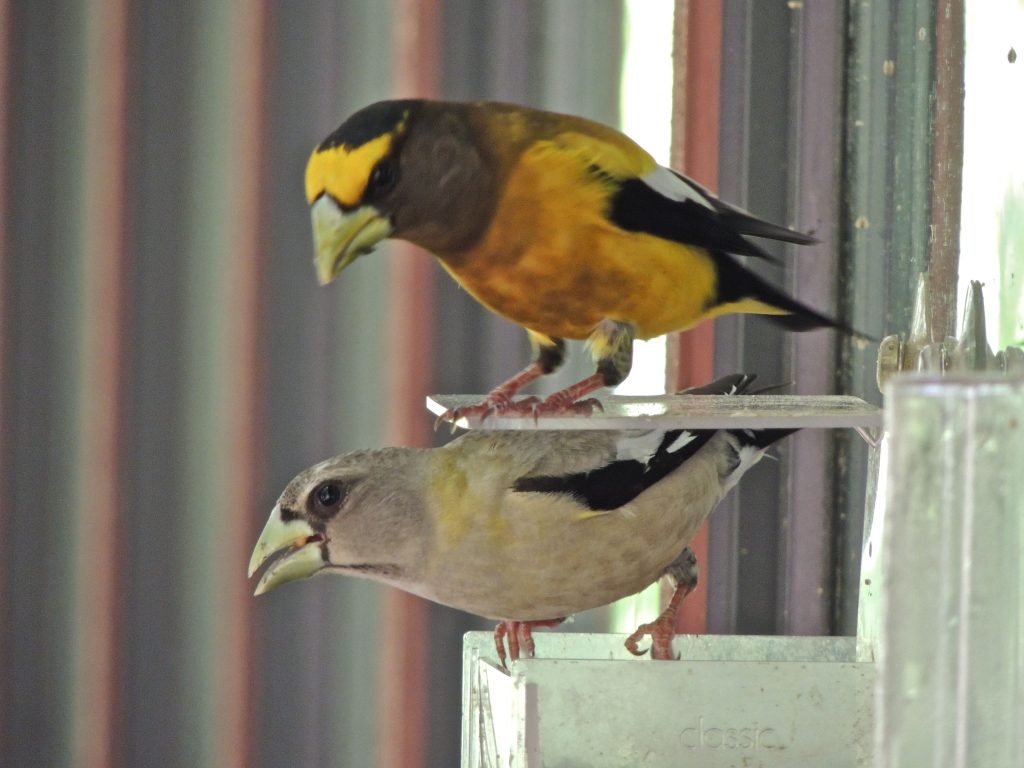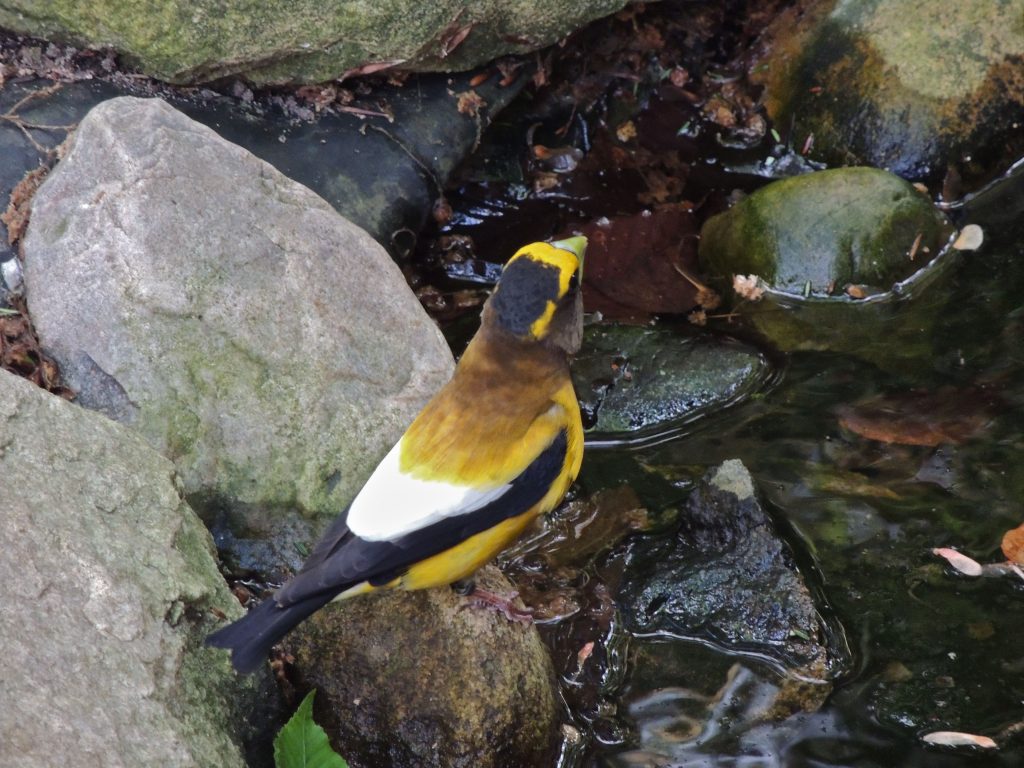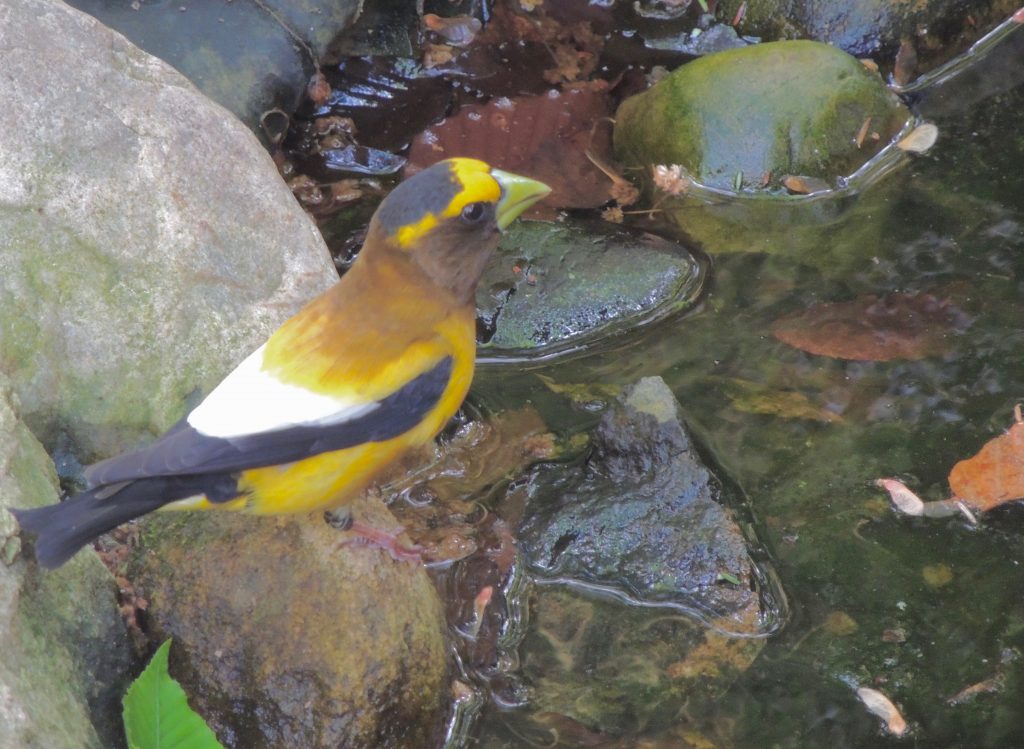June 6 2017. Hartwick Pines State Forest, Michigan. Today’s Bird of the Day came as a surprise. A complete surprise because the idea of northern finches was quite possibly one of the furthest things from my mind; after all we had spent the day in pursuit of what I suppose you might call the birds of summer: warblers, vireos, grebes and the like. Then suddenly right in front of us was an Evening Grosbeak, a bird I associate with winter.
We had come to the end of a longish trek north and decided to visit the visitor centre at Hartwick Pines State Park in north-central Michigan. The countryside had changed over the past half day from largely prosperous agriculture beset by broadleaf forest to sandy and dry with impoverished or half-abandoned farms; altogether more northern.
At the park’s visitor centre a staff member was telling us about the area and what to expect. As part of her explanation she pointed casually at a loaded bird feeder where a male Evening Grosbeak sat happily gulping down sunflower seed. It was a complete reset to the day: it cast aside memories of Mourning Warblers, American Bitterns and Ring-necked Pheasant any of which otherwise might have been my Bird of the Day; this was a late entrant and totally unrehearsed.

Evening Grosbeaks are gorgeous birds, to look at anyway, for all I know they may be boreal thugs. The photo above is of a male and female on one of the feeders and the one below a male.


A few odds and ends about Evening Grosbeaks: It’s been decades since I last saw one; it may have been a spring day thirty-five years ago when I last saw a small flock of them. A scattering of buttercup yellow birds on a gravel road busily picking grit; an old and vivid memory.
Evening Grosbeaks are a close relative of Europe’s Hawfinch, two of three birds in the genus Cocothraustes (a melodious and somehow self-descriptive word!) The three in the family are: Hawfinch – Coccothraustes coccothraustes; Evening Grosbeak – Coccothraustes vespertinus; and the Mexico’s Hooded Grosbeak – Coccothraustes abeillei. The Evening Grosbeak is a year-round bird of the northern coniferous forests and one of the best (and easiest) ways to see them is on-line via a web-cam set up in a northern Ontario back yard and streamed on Cornell Lab of Ornithology’s website (Here’s a link , click on Ontario Feeder Watch, but at the time of writing it is showing archived material).